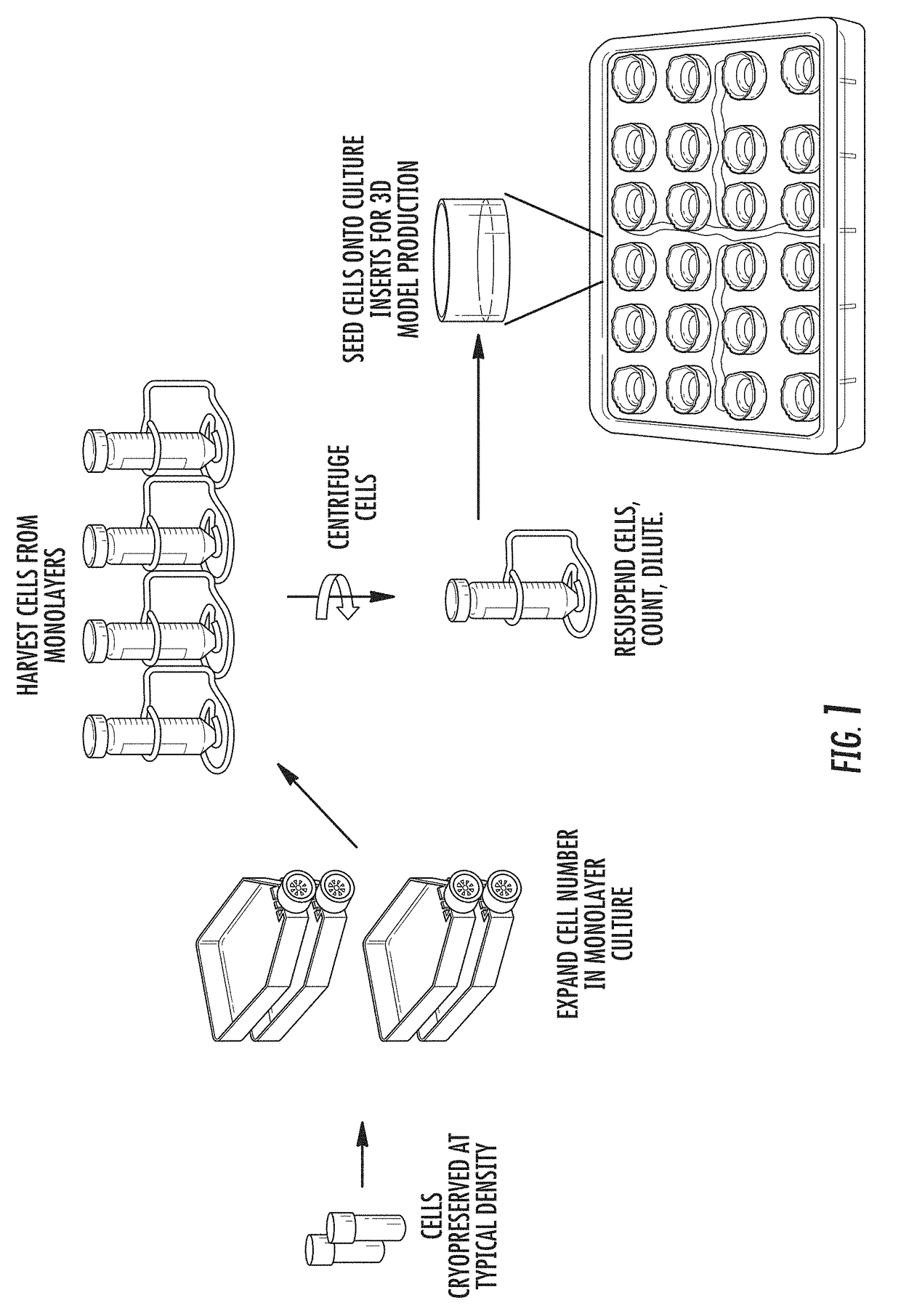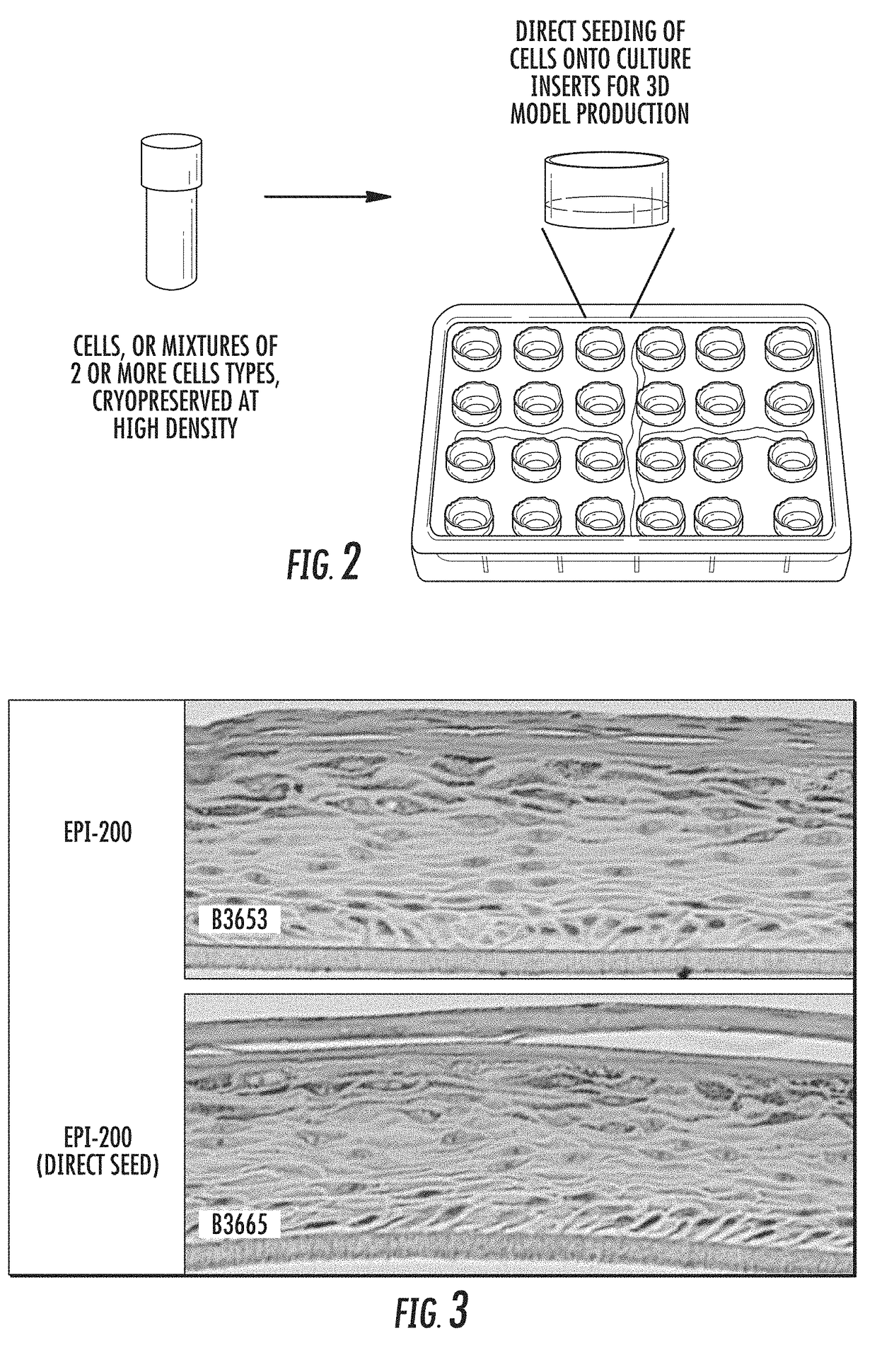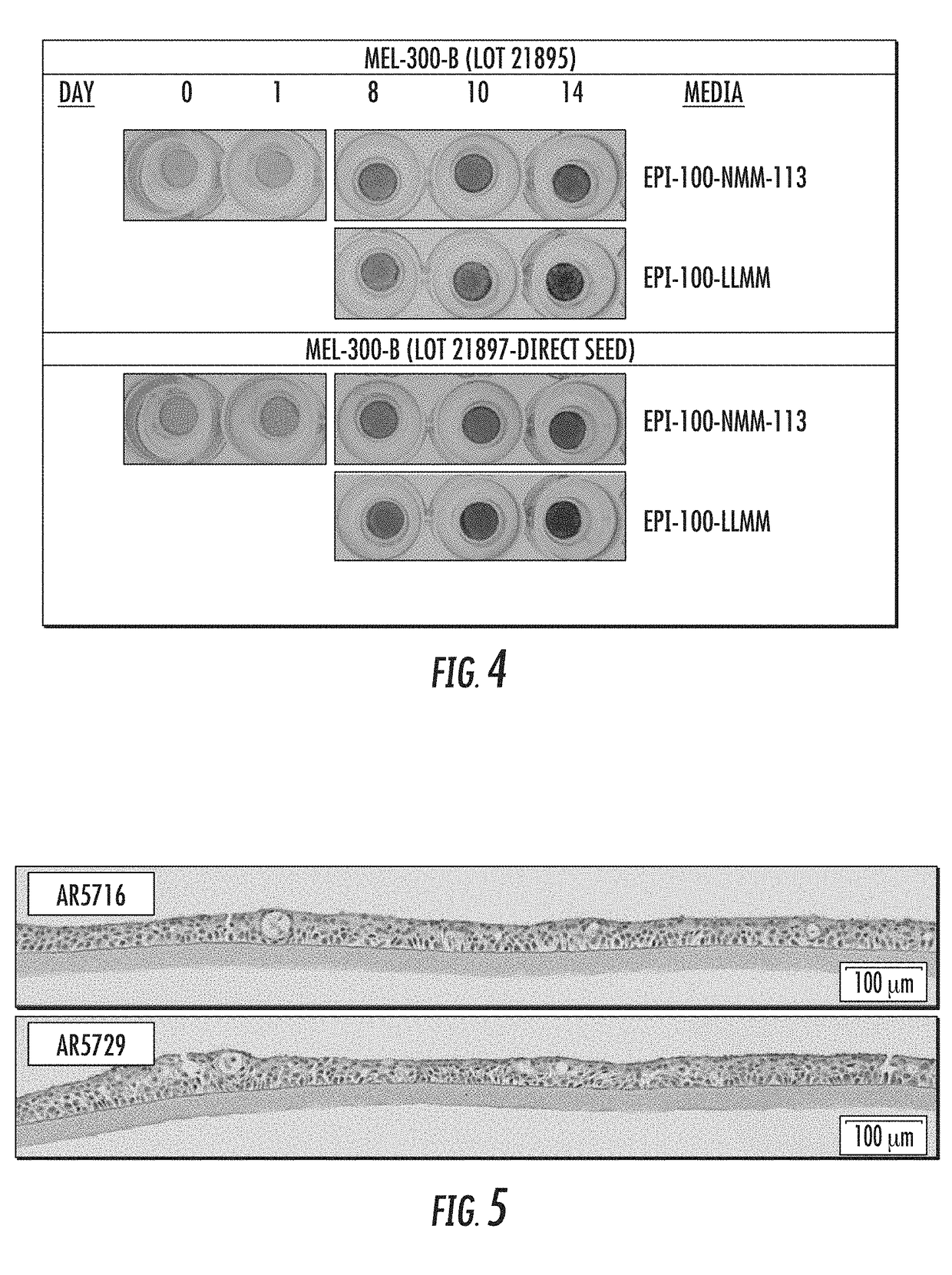Methods and Kits for Production of Tissue Equivalents from Cryopreserved Cells
a cryopreserved cell and tissue equivalent technology, applied in the field of methods for producing tissue equivalent model systems, can solve the problems of variability in the end product, the need to perform each of these tasks, and the traditional methods for producing three-dimensional tissue models require significant time and labor. achieve the effect of saving labor and time, being more reliable and reproducibl
- Summary
- Abstract
- Description
- Claims
- Application Information
AI Technical Summary
Benefits of technology
Problems solved by technology
Method used
Image
Examples
example 1
Production of 3D organotypic Skin Model Containing keratinocytes
[0063]Normal human epidermal keratinocytes were cryopreserved at a density of 8×106 cells / mL in medium consisting of 80% (v / v) Medium 154 (Life Technologies), 10% (v / v) fetal bovine serum (Hyclone) and 10% (v / v) dimethylsulfoxide (Sigma) using a controlled rate freezer (Cryomed). Cells were stored in the vapor phase of a liquid N2 storage dewar.
[0064]Cells were recovered from cryopreservation by rapidly warming in a 37° C. water bath. The cell suspension was diluted 1 / 10 into seeding medium (MatTek Corp.). The number of viable cells recovered (determined by trypan blue exclusion method) was determined by counting with a hemocytometer, and cells were centrifuged at 300×g for 10 minutes. The cell pellet was resuspended in EpiDerm' seeding medium (MatTek) at a density of 7.5×105 cells / ml, and seeded in a volume of 0.4 ml directly onto a microporous polyethylene terephthalate (PET) membrane insert that had been precoated wi...
example 2
Production of 3D organotypic Skin Model Containing keratinocytes and melanocytes
[0069]Normal human epidermal keratinocytes and normal human dermal melanocytes were cryopreserved at a ratio of 10:1, and total density of 11×106 cells / mL in medium consisting of 80% (v / v) Medium 154 (Life Technologies), 20% (v / v) fetal bovine serum (Hyclone) and 10% (v / v) dimethylsulfoxide (Sigma) using a controlled rate freezer (Cryomed). Cells were stored in the vapor phase of a liquid N2 storage dewar.
[0070]Cells were recovered from cryopreservation by rapidly warming in a 37° C. water bath. The cell suspension was diluted 1 / 10 into MelanoDerm™ seeding medium (MatTek Corp.). The number of viable cells recovered (determined by trypan blue exclusion method) was determined by counting with a hemocytometer, and cells were centrifuged at 300×g for 10 minutes. The cell pellet was resuspended in MelanoDerm™ seeding medium at a density of 7.5×105 cells / ml, and seeded in a volume of 0.4 mL directly onto a mic...
example 3
Production of 3D organotypic Airway Tissue Equivalent Model Containing bronchial epithelial Cells
[0075]Normal human bronchial epithelial cells (NHBE) were cryopreserved at a density of 1×107 cells / mL in medium consisting of 80% (v / v) NHBE growth medium (MatTek), 10% (v / v) fetal bovine serum (Hyclone) and 10% (v / v) dimethylsulfoxide (Sigma) using a controlled rate freezer (Cryomed). Cells were stored in the vapor phase of a liquid N2 storage dewar.
[0076]Cells were recovered from cryopreservation by rapidly warming in a 37° C. water bath. The cell suspension was diluted 1 / 10 into NHBE growth medium (MatTek, Lonza or equivalent). The number of viable cells recovered (determined by trypan blue exclusion method) was determined by counting with a hemocytometer, and cells were centrifuged at 300×g for 10 minutes. The cell pellet was resuspended in EpiAirway™ seeding medium at a density of 0.5×106 cells / mL, and seeded in a volume of 0.4 ml directly onto a microporous polycarbonate membrane ...
PUM
| Property | Measurement | Unit |
|---|---|---|
| osmolality | aaaaa | aaaaa |
| volume | aaaaa | aaaaa |
| pore size | aaaaa | aaaaa |
Abstract
Description
Claims
Application Information
 Login to View More
Login to View More - R&D
- Intellectual Property
- Life Sciences
- Materials
- Tech Scout
- Unparalleled Data Quality
- Higher Quality Content
- 60% Fewer Hallucinations
Browse by: Latest US Patents, China's latest patents, Technical Efficacy Thesaurus, Application Domain, Technology Topic, Popular Technical Reports.
© 2025 PatSnap. All rights reserved.Legal|Privacy policy|Modern Slavery Act Transparency Statement|Sitemap|About US| Contact US: help@patsnap.com



